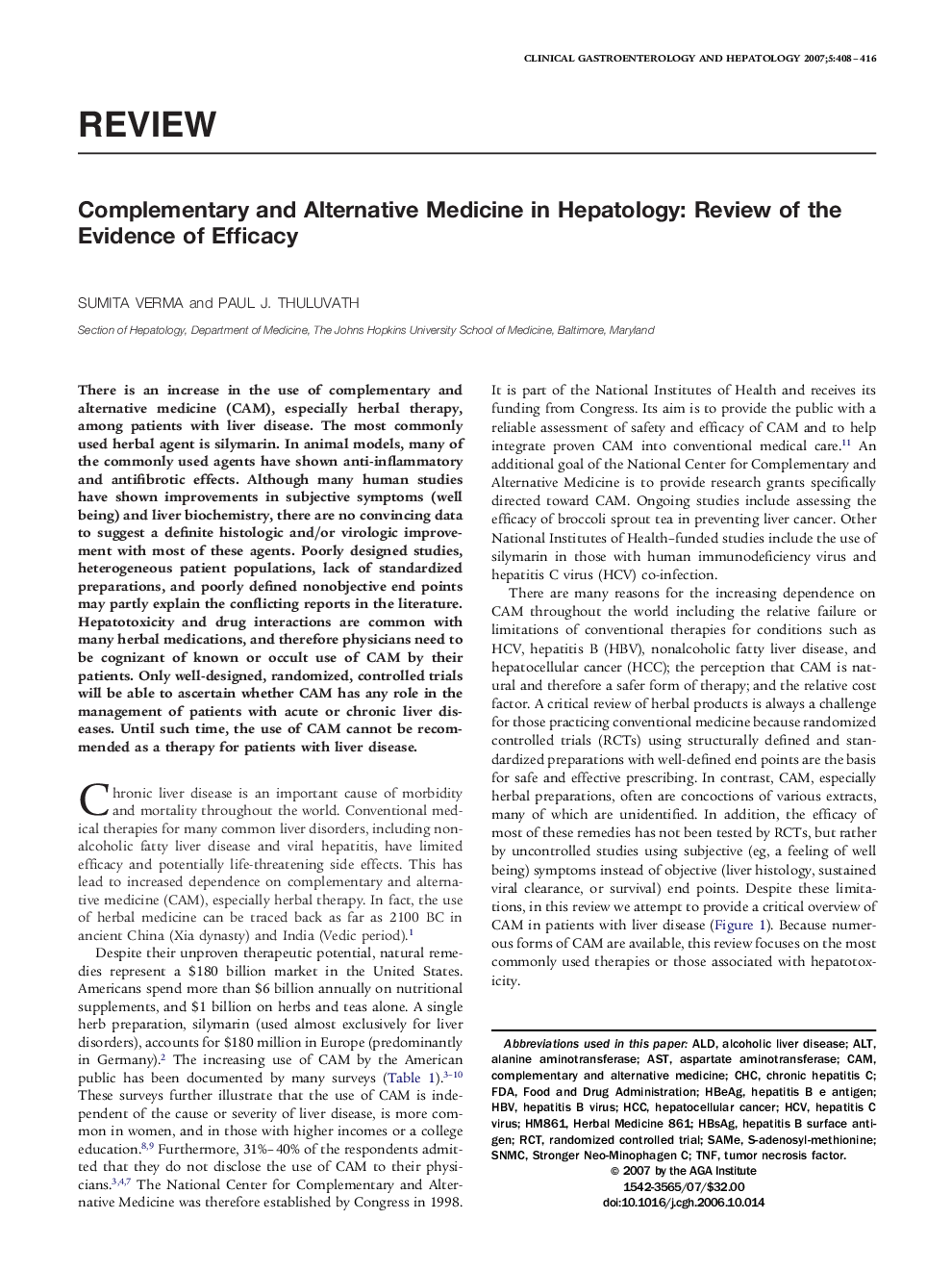| Article ID | Journal | Published Year | Pages | File Type |
|---|---|---|---|---|
| 3285168 | Clinical Gastroenterology and Hepatology | 2007 | 9 Pages |
There is an increase in the use of complementary and alternative medicine (CAM), especially herbal therapy, among patients with liver disease. The most commonly used herbal agent is silymarin. In animal models, many of the commonly used agents have shown anti-inflammatory and antifibrotic effects. Although many human studies have shown improvements in subjective symptoms (well being) and liver biochemistry, there are no convincing data to suggest a definite histologic and/or virologic improvement with most of these agents. Poorly designed studies, heterogeneous patient populations, lack of standardized preparations, and poorly defined nonobjective end points may partly explain the conflicting reports in the literature. Hepatotoxicity and drug interactions are common with many herbal medications, and therefore physicians need to be cognizant of known or occult use of CAM by their patients. Only well-designed, randomized, controlled trials will be able to ascertain whether CAM has any role in the management of patients with acute or chronic liver diseases. Until such time, the use of CAM cannot be recommended as a therapy for patients with liver disease.
